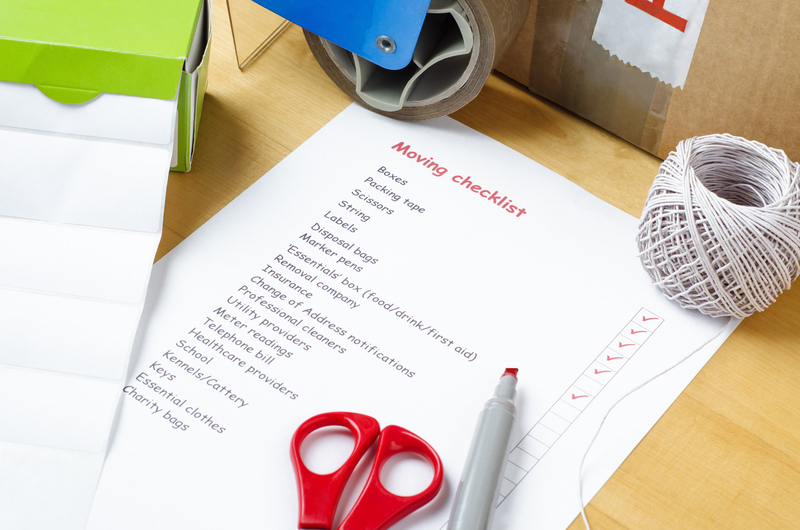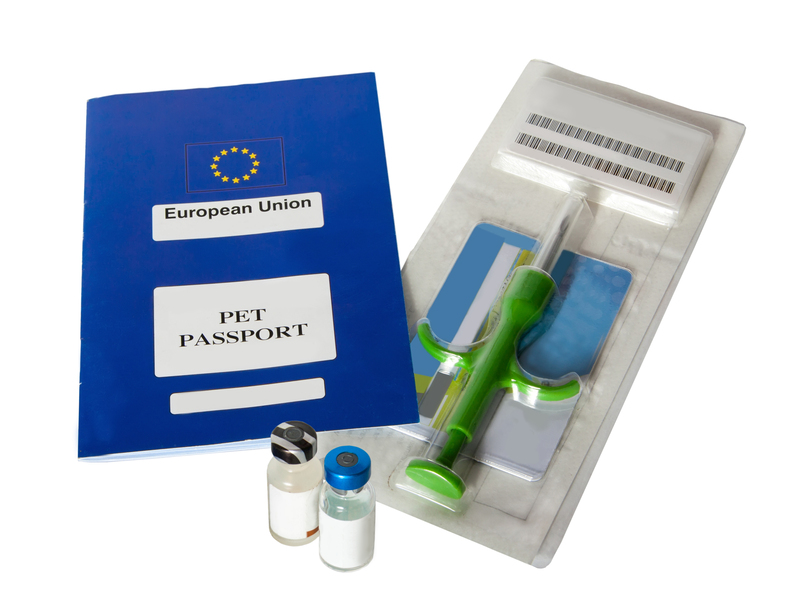Pro Tips for Shifting Bulky Loads Solo
Moving large, heavy objects by yourself can seem like a daunting, even impossible, task. But with the right preparation, techniques, and equipment, it's entirely possible to shift bulky loads solo without risking your safety, damaging your belongings, or straining your back. Whether you're rearranging furniture, relocating appliances, or tackling a DIY move, this guide will provide you with expert tips and proven strategies for efficient solo heavy lifting.
Understanding the Risks of Handling Heavy Loads Alone
Before you attempt to move heavy or oversized items, it's crucial to recognize the potential risks involved. Lifting incorrectly or moving awkwardly-shaped objects without assistance can lead to injuries, like back strains, musculoskeletal disorders, and even accidents. That's why planning and proper technique are essential when moving bulky items by yourself.
Take a moment to assess your limits. Some loads are simply too dangerous to move solo, no matter how well-prepared you are. When in doubt, seek help or invest in professional movers for exceptionally large or valuable items. For tasks within your capability, adhere to the following pro tips for solo heavy lifting to get the job done safely and efficiently.

Essential Preparation Before Moving Bulky Loads Alone
1. Plan Your Route
- Measure Doorways and Hallways: Use a tape measure to check the dimensions of all entryways, stairways, and tight spaces through which your load must pass. Compare these with the item's measurements (including its orientation) for smooth passage.
- Clear Obstacles: Remove rugs, decor, or other objects from your path to prevent trips and slips.
- Map Out Resting Points: Identify locations to pause and set the load down safely if you need a break.
2. Choose the Right Time
Whenever possible, move heavy objects alone during daylight hours to ensure good visibility. Avoid rushed or fatigued efforts. Adequate rest beforehand and hydration can make a significant difference in your performance and safety.
3. Gather Tools and Equipment
The right tools are the unsung heroes of stress-free solo lifting. Consider the following:
- Furniture Dollies: These handy wheeled platforms work wonders for moving appliances, dressers, and bookcases.
- Lifting Straps and Harnesses: Specially designed straps can redistribute weight and provide extra leverage, reducing strain on your back.
- Hand Trucks: Upright dollies with handles and wheels are perfect for boxes, stacks, and smaller furniture pieces.
- Sliders or Gliders: Place under the legs or corners of furniture to slide them across floors with less friction and risk.
- Work Gloves: Protect your hands and improve grip, especially on slick surfaces.
Pro Techniques for Shifting Heavy Items Alone
1. Break Down Large Loads
Disassemble everything you can. Remove table legs, shelves, drawers, and detachable hardware to lighten the load and make the object easier to maneuver. Take photos during disassembly for easy reassembly later.
2. Use Proper Lifting Techniques
- Keep your back straight and lift with your legs: Squat down to the object, grasp it firmly, and rise using your legs, not your back. This technique drastically reduces injury risk.
- Hold the load close to your body: Keep the item as central as possible to maintain balance.
- Pivot your feet, don't twist: Turn your whole body rather than twisting your torso while holding weight.
3. Leverage Gravity To Your Advantage
Use ramps, inclines, or stairs wisely. If moving down stairs, position yourself above the load and gently lower the object, controlling its weight. For ramps, ensure the surface is stable and free from debris to prevent the load from sliding out of control.
4. Slide, Don't Lift When Possible
For objects that don't need to be fully lifted, use sliders, thick blankets, or cardboard to glide bulky pieces across tile or hardwood floors. This minimizes strain and the risk of dropping the item.
5. Use Rolling Methods
- Appliance Dollies: These come with straps and wheels--perfect for fridges, washers, and large household appliances. Secure the load tightly before moving.
- Roll Round Objects: For cylindrical items like barrels, gently roll them across the floor instead of lifting.
Safety Precautions When Shifting Heavy Objects Solo
Your health comes first. These safety tips are vital for every solo mover:
- Wear supportive, closed-toe shoes to protect against stubs and provide stability.
- Lift within your limits: Never attempt to move an item that's obviously too heavy or unwieldy.
- Maintain a clutter-free area to prevent trips and slips.
- Secure pets and children in a separate area during the move.
- Take frequent breaks to prevent fatigue.
- Keep your phone nearby in case you need emergency assistance.
- Ask for help if you experience pain or feel unsafe.
Creative Hacks & Tricks for Moving Bulky Loads Alone
1. Leverage the Power of Leverage
Use a sturdy crowbar or a long board as a lever under one edge of the item. Place a block as a fulcrum; this helps lift one side just enough to position sliders or maneuver the item with less effort.
2. The Blanket Drag
For heavy furniture on hard floors, slip a thick moving blanket or old rug under the object and gently drag it. This protects both your floors and the furniture base.
3. Cardboard for Carpets
Cut large pieces of corrugated cardboard and place them under furniture legs; this enables easy sliding over carpet or uneven surfaces.
4. Rope Handles for Boxes
If moving large, unwieldy boxes, make temporary handles by carefully cutting small holes and threading strong rope through--creating a grip that makes lifting and carrying much easier.
5. The Sheet Trick for Mattresses
Wrap a (preferably fitted) sheet around your mattress and twist up the ends to create makeshift handles, allowing for better balance and control when moving bulky mattresses by yourself.
Choosing the Best Equipment for Solo Heavy Lifting
Different moving tools offer unique benefits. Here's a rundown to help you select the right equipment for handling loads:
-
Furniture Dollies:
- Best For: Dressers, wardrobes, cabinets, and stacked boxes.
- How to Use: Tilt the furniture and slide the dolly beneath. Secure with straps or bands for stability before rolling.
-
Stair Climbing Hand Trucks:
- Best For: Moving loads up/down stairs safely.
- Special Tip: Go slow and steady, making sure the load is balanced.
-
Lifting Straps:
- Best For: Appliances, large boxes, and furniture.
- Pro Tip: Adjust the straps snugly to maximize leverage and allow safer lifting posture.
-
Movers' Sliders:
- Best For: Sliding furniture over hardwood, tile, or carpet without effort or damage.
-
Padded Gloves:
- Best For: Improving grip and reducing calluses during long or repetitive carrying.
Expert Tips for Specific Items
How to Move a Refrigerator Alone
- Defrost and Empty: Remove all food, shelves, and drawers. Allow ice to melt and dry out the inside.
- Secure the Doors: Use strong tape or rope to keep doors shut.
- Use an Appliance Dolly: Slide the dolly beneath, tilt gently, and secure the fridge tightly before maneuvering.
- Keep Upright: Move the refrigerator as upright as possible to protect the compressor.
Moving a Mattress Without Help
- Fold and Strap: If your mattress allows, fold it in half and use a rope or straps to hold it in place.
- Use Handles: If there are built-in handles, use both; otherwise, apply the sheet trick described above.
- Drag on Carpet: Blankets or sheets make dragging easier and protect mattress integrity.
Moving a Bookshelf Solo
- Remove Contents: Always empty shelves before moving.
- Disassemble if feasible, or remove detachable shelves.
- Slide, Don't Lift using gliders or a blanket if full lifting isn't possible.
Storage and Packing Tips for Bulky Items
- Protect with Padding: Use moving blankets, bubble wrap, or towels around corners and edges to prevent damage to both items and walls.
- Label Disassembled Parts and Hardware: Store screws, bolts, and small parts in labeled bags taped to the corresponding item.
- Even Out the Weight: When placing bulky items in a vehicle, distribute the load evenly to avoid tipping and ease unloading.
After the Move: Caring for Yourself
Post-move care is just as important as technique. Follow these aftercare steps to avoid lingering aches or injuries:
- Cool Down: Gently stretch your major muscle groups.
- Hydrate: Replace lost fluids with plenty of water.
- Rest: Take time to relax and listen to your body. Soreness is natural, but sharp pain warrants medical attention.

FAQs for Solo Heavy Lifting
- Q: Can I move a washing machine alone?
A: Yes, but it's best done with a sturdy appliance dolly, proper securing straps, and a clear path. - Q: How do I avoid back injury?
A: Always lift with your legs, never your back, and consider using lifting straps for extra support. - Q: What should I do if the item is simply too heavy to budge?
A: Don't risk it. Stop immediately and seek assistance or professional help to prevent injury or damage.
Conclusion: Moving Bulky Loads Solo Made Easy
Shifting heavy loads by yourself doesn't have to be an ordeal. By planning carefully, using the right tools, and following proven safety and lifting techniques, you can accomplish even challenging solo moves safely and efficiently. Remember: when in doubt, seek help, but for tasks within your strength and skill set, these pro tips for shifting bulky loads solo will see you through every step of the way.
Ready to take charge of your move? With these strategies and tools, you'll handle any heavyweight challenge like a true pro!



